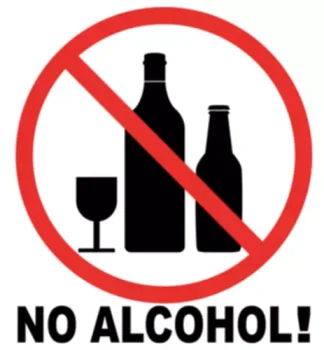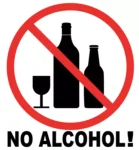
By implementing certain strategies, people can develop resilience, self-compassion, and adaptive coping skills to counteract the effects of the AVE and maintain lifelong sobriety. Additionally, individuals may engage in cognitive distortions or negative self-talk, such as believing that the relapse is evidence of personal weakness. Ark Behavioral Health offers 100% confidential substance abuse assessment and treatment placement tailored to your individual needs. This can include abstinence from substance abuse, overeating, gambling, smoking, or other behaviors a person has been working to avoid.

Relapse Prevention And Ongoing Treatment At Bedrock
- In explaining this result, it can be said that the lapse of individuals is closely related to the level of restraint and the violation effect proposed by Marlatt.
- Each session included a variety of activities, such as group discussion, lecture, Q&A, individual counseling, and role play to encourage participants to engage more in discussion and participation.
- The abstinence violation effect (AVE) occurs when an individual, having made a personal commitment to abstain from using a substance or to cease engaging in some other unwanted behavior, has an initial lapse whereby the substance or behavior is engaged in at least once.
- This cue leads to a cognitive conflict, as the individual struggles between their desire to maintain abstinence and the urge to engage in the prohibited behavior.
- The results of the Niknam et al. study indicated that Marlatt’s cognitive-behavioral training was effective in relapse prevention and craving reduction in females with substance dependency 34.
- Relapse has been variously defined, depending on theoretical orientation, treatment goals, cultural context, and target substance (Miller 1996; White 2007).
The Chi-square test showed a significant difference between the two intervention and control groups in terms of the average number of daily cigarettes in 4 points. Understanding the AVE is crucial for individuals in recovery and those focused on healthier lifestyle choices. Instead of surrendering to the negative spiral, individuals can benefit from reframing the lapse as a learning opportunity and teachable moment. Recognizing the factors that contributed to the lapse, such as stressors or triggers, helps individuals to abstinence violation effect develop strategies and techniques to navigate similar challenges in the future. In the multifaceted journey of overcoming addiction and living a healthier life, individuals often encounter a psychological phenomenon known as the abstinence violation effect (AVE). It sheds light on the challenges individuals face when attempting to maintain abstinence and how a single lapse can trigger a surge of negative emotions, potentially leading to a full relapse or a return to unhealthy living (Collins & Witkiewitz, 2013; Larimer, Palmer, & Marlatt, 1999).
Factors That Contribute To The Abstinence Violation Effect
Marlatt’s cognitive-behavioral treatment led to decreased relapse and craving in women with methamphetamine dependence 33. The results of the Niknam et al. study indicated that Marlatt’s cognitive-behavioral training was effective in relapse prevention and craving reduction in females with substance dependency 34. In general, although in what is Oxford House the present study, the findings have shown the effectiveness of the intervention in limiting lapse and relapse in people who received the cognitive behavior therapy based on Marlatt’s model compared to the control group, some points are important in reviewing the results. First, during the three stages of follow-up, an increase was observed in terms of lapse and relapse in the intervention group, which highlights the need to consider reminder and booster programs over time in the intervention. Perhaps one of the reasons for this situation is that in the present study, the intervention was limited to Marlatt’s model and some determinants were outside this framework that should be considered.
Spring Hill Recovery Center
- One of the key features of the AVE is its potential to trigger a downward spiral of further relapse and continued substance use.
- Check out our blog posts and resource links for the latest information on substance abuse.
- I have lost all that time,” which can trigger a self-destructive mindset and potentially lead to further relapse.
Instead of sinking into self-blame, reframe setbacks as temporary obstacles rather than insurmountable failures, and replace blame with self-compassion and understanding. Feelings of guilt, shame, and self-blame may lead people to question their ability to overcome addiction and exacerbate underlying issues of low self-esteem. Overall, the Abstinence Violation Effect is a complex phenomenon influenced by a combination of cognitive, emotional, and biological factors. One of the key features of the AVE is its potential to trigger a downward spiral of further relapse and continued substance use. For example, I am a failure (labeling) and will never be successful with abstaining from drinking, eating healthier, or exercising (jumping to conclusions). The funding agencies had no role in the design of study, data collection and analysis, or presentation of the results.

The combination of these negative emotions and beliefs can further exacerbate the degree of the lapse and derail from their recovery process. Without addressing the impact that AVE has, it can inhibit the ability to achieve recovery goals. In the intervention group, out of 112 participants, 84 participants had a lapse immediately, 96 participants one week after and 103 people three months after the intervention. The results showed that there is a significant difference between the lapse rate in the intervention group compared to the control group immediately, one week and three months after the intervention. In explaining this result, it can be said that the lapse of individuals is closely related to the level of restraint and the violation effect proposed by Marlatt. Training coping skills can lead to more self-restraint of people who smoke against the temptations and thus lapse rate is reduced.

NEARBY TERMS

Through shifting attention towards positive coping skills and strategies, the impact of lapse and the intensity of the AVE can be minimized. Setbacks are a normal part of the recovery, meaning the isolated event is not an indicator of overall failure. Instead, foster the mindset that the event was a learning opportunity which provided insight into what can be done better in the future.
